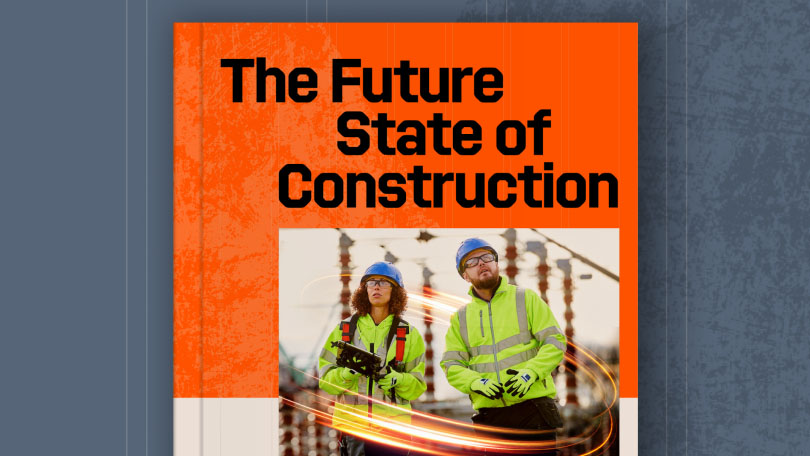— 4 min read
How to Execute Timely & Accurate Construction Buyouts

Last Updated Sep 15, 2025

Adriano Faggin
Associate Director
Adriano Faggin MCIOB, MAPM is an Associate Director at Turner & Townsend with 26 years leading sustainable, high-value construction projects; he’s researching AI for AEC at PhD level and is a keen motorsport enthusiast.

Zoe Mullan
27 articles
Zoe Mullan is an experienced content writer and editor with a background in marketing and communications in the e-learning sector. Zoe holds an MA in English Literature and History from the University of Glasgow and a PGDip in Journalism from the University of Strathclyde and lives in Northern Ireland.
Last Updated Sep 15, 2025

A construction buyout is the critical procurement phase that bridges preconstruction planning and full-site mobilisation. During this phase, main contractors (MCs) competitively select subcontractors, negotiate final agreements, and issue purchase orders for materials, equipment, and services. While MCs typically manage this process, alternative frameworks exist. For instance, client-led 'self-delivery models' see owners assume design-builder roles, integrating procurement directly. This discussion focuses on the MC-led model while acknowledging these alternatives.
The rigour applied during buyout directly impacts project execution. This phase establishes the supply chain, cost baseline, and performance benchmarks that will govern on site activities. Consequently, inadequate due diligence – such as hasty subcontractor selection or incomplete risk assessments – triggers serious issues. These problems include schedule variances, inter-trade coordination failures, and inefficient resource allocation, ultimately escalating claims and disputes.
Table of contents
Three Pillars for Better Buyouts
To optimise your buyouts, focus on three fundamental pillars: schedule viability, resource allocation, and scope breakdown. Rigorous evaluation of these elements during tender assessments enables data-driven subcontractor selection, minimising downstream risks.
Programme Assessment
First, assess your proposed construction schedule for feasibility by leveraging historical data and probabilistic modelling where possible. While seasoned professionals can intuitively identify unrealistic schedules, systematic validation remains essential. Therefore, verify the critical path method (CPM) logic, float allocations, and milestone sequencing against project constraints such as site logistics and regulatory approvals.
Resource Verification
Next, confirm that resource histograms and supply chain logistics align with the bill of quantities (BoQ). Compare labour, plant, and material lead times against market benchmarks, ensuring compliance with just-in-time (JIT) principles to mitigate holding costs. Additionally, cross-reference BoQ items with subcontractor capabilities, evaluating capacity constraints via resource-loaded schedules.
Scope Breakdown
Finally, decompose work breakdown structure (WBS) to Level 4 or beyond, ensuring granular visibility of both critical and non-critical activities. This approach enables concurrent execution analysis, identifying opportunities for fast-tracking or crashing while preserving overall critical path duration and optimising earned value management (EVM) metrics.
Prioritise subcontractors with dedicated in-house scheduling experts, such as a certified project management software specialist assigned exclusively to your project.
Firms lacking this capability often exhibit higher variance in activity durations, leading to probabilistic delays modelled using Monte Carlo simulations, where programme slippage can exceed 15-20% without robust controls.

Adriano Faggin
Associate Director
Turner & Townsend
Managing Buyouts During Supply Chain Uncertainty
External disruptions present significant challenges that require adaptive procurement strategies. Geopolitical tensions impacting raw material sourcing – such as steel tariffs or shipping lane blockades – demand flexible responses. In these situations, identify alternative materials while balancing cost inflation with performance criteria per ASTM or EN standards, maintaining project viability through sensitivity analyses.
When confronting supply chain volatility, employ indexed pricing mechanisms to safeguard against escalations. For metals, reference the London Metal Exchange (LME) indices for real-time futures pricing, integrated with Office for National Statistics (ONS) construction output price indices (COPI) or building cost information service (BCIS) data.
Formulas like Cost Adjustment = Base Price × (1 + (Current Index - Base Index)/Base Index) enable precise forecasting of inflationary pressures, allowing for provisional sums or fluctuation clauses in NEC or FIDIC contracts to equitably distribute risks.

Adriano Faggin
Associate Director
Turner & Townsend
Furthermore, agility is paramount in uncertain conditions. Create collaborative risk registers with subcontractors, incorporating scenario planning and BIM-enabled clash detection for early issue resolution. Meanwhile, maintain integrated commercial oversight using enterprise resource planning (ERP) systems for real-time price tracking and contingency budgeting.
How Technology Improves Buyouts
Digitalisation, particularly through AI-driven tools, holds transformative potential for construction buyouts. Approval workflows, often bottlenecked by iterative reviews, can accelerate through natural language processing (NLP) for tender summarisation and sentiment analysis of reviewer comments. Similarly, generative AI can provide initial query prompts in value engineering sessions.
Standardisation also addresses format inconsistencies in tender returns, which typically hinder like-for-like comparisons. Implement cloud-based platforms like Procore, mandating subcontractor submissions using standardised templates with embedded metadata. This approach enables automated compliance checks and AI-assisted bid levelling.
Learning from Challenging Buyouts
Adverse outcomes often provide invaluable insights that help refine future buyout protocols. Poorly vetted processes frequently expose gaps in subcontractor assessment, which amplifies execution risks.
I encountered a project where the façade subcontractor excelled in tender collaboration, demonstrating proactive value engineering and BIM interoperability. Post-contract, however, their performance deteriorated upon full subcontracting to unvetted tiers.
This resulted in a six-month delay due to non-compliant curtain wall systems failing BS EN 13830 standards and coordination lapses in IFC model exchanges.

Adriano Faggin
Associate Director
Turner & Townsend
To mitigate such pitfalls, enforce robust contractual safeguards from the outset.
Thoroughly audit subcontract agreements to incorporate anti-subletting clauses or, at minimum, a structured veto mechanism under JCT or AIA frameworks.
Mandate prior notification of any tier-2 engagements to enable pre-approval via qualitative assessments (e.g., ISO 9001 certification) and quantitative commercial evaluations (e.g., Dun & Bradstreet credit scoring) before execution.

Adriano Faggin
Associate Director
Turner & Townsend
These lessons demonstrate that thorough vetting processes, combined with strong contractual frameworks, lay the foundation for successful buyouts that support seamless project execution.
Categories:
Written by

Adriano Faggin
Associate Director | Turner & Townsend
Adriano Faggin MCIOB, MAPM is an Associate Director at Turner & Townsend with 26 years leading sustainable, high-value construction projects; he’s researching AI for AEC at PhD level and is a keen motorsport enthusiast.
View profileReviewed by

Zoe Mullan
27 articles
Zoe Mullan is an experienced content writer and editor with a background in marketing and communications in the e-learning sector. Zoe holds an MA in English Literature and History from the University of Glasgow and a PGDip in Journalism from the University of Strathclyde and lives in Northern Ireland.
View profileExplore more helpful resources

Construction Management Contracts: A Complete UK Guide
Managing construction contracts can lead to an extensive physical paper trail. Sharing contracts, getting signatures and managing timelines is difficult when teams and clients are scattered across job sites and...

Key Differences Between Contractors & Subcontractors
In UK commercial construction, main (or principal) contractors engage directly with project owners to deliver complete construction programmes, while subcontractors perform specific scopes of work under the main contractor’s management....

The Role of RFPs in UK Construction Projects
Requests for Proposals (RFPs) are a core document for construction procurement in the United Kingdom. Effective RFPs align expectations, establish clear evaluation criteria, and create accountability between clients and contractors....

Financial Management in Construction Projects
Effective financial management can make or break construction projects. Teams that master budgeting, cash flow and cost control are better positioned to deliver projects on time, within budget and with...
